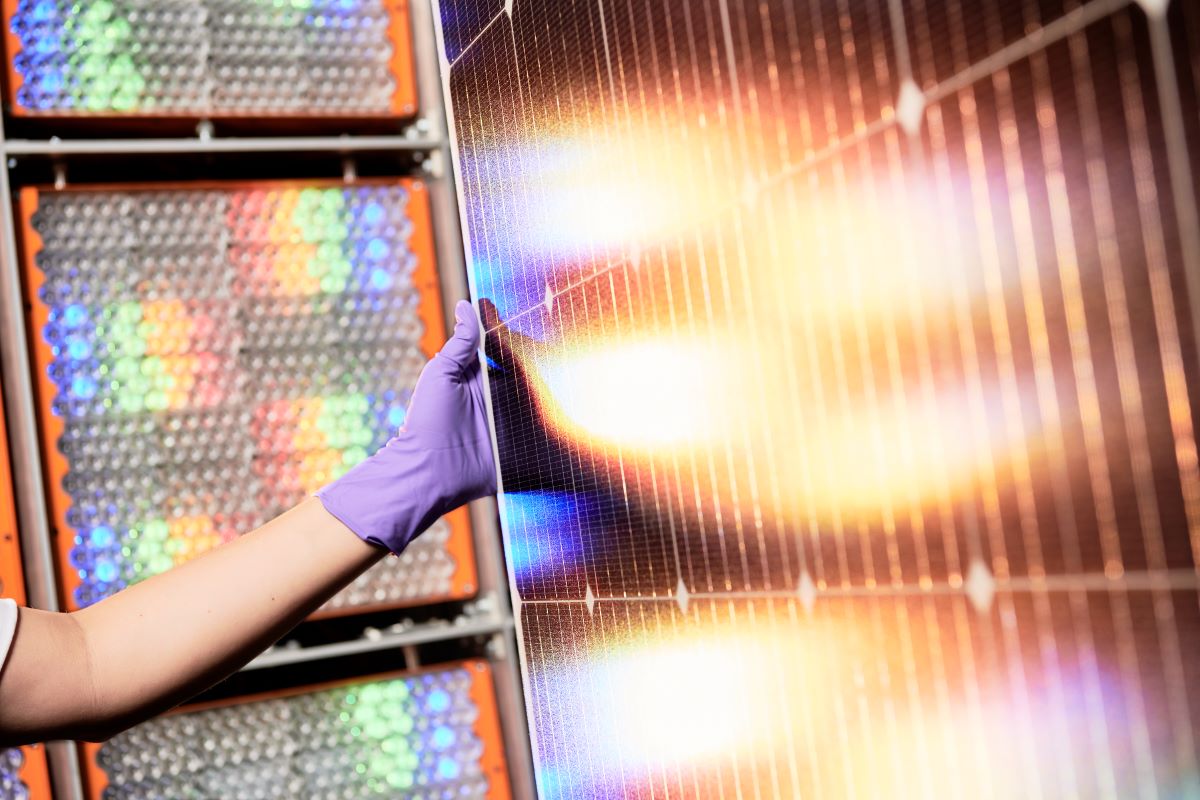From pv magazine global
Germany’s Fraunhofer ISE has fabricated a perovskite-silicon tandem solar module with a glass-glass design.
The panel has a power conversion efficiency of 25% and an output of 421 W. It measures 1.68m2 and uses cells produced by Oxford PV, a UK-based perovskite solar cell manufacturer with pilot production in Germany. Oxford PV says that the module was assembled by the Fraunhofer team using its specifications.
“This new world record is a crucial milestone for Oxford PV, proving that our tandem solar cells can deliver record-breaking performance when assembled into solar panels,” Oxford PV CEO David Ward said in a statement.
The tandem cells produced by Oxford PV are M6-format. Last year, the company broke a record with a verified cell efficiency of 28.6 %. The tandem cells are currently produced in a small series line in Brandenburg, Germany, with commercial production slated for later this year.
The researchers said they utilized commercially available PV production equipment installed at the Fraunhofer Module Technology Evaluation Center (Module-TEC) and optimized the processes to make the glass-glass modules. “The fact that mass production-compatible technology was used for its manufacture demonstrates the enormous potential of tandem technology for the PV industry,” said Stefan Glunz, head of PV at Fraunhofer ISE.
The solar cells were interconnected using conductive bonding equipment at Fraunhofer ISE’s Module-TEC. As the perovskite layer of the tandem cells is temperature-sensitive, the research team said it had to develop low-temperature processes for the interconnection and encapsulation of the solar cells.
“In the future, we will also be testing another alternative: soldering the solar cells at low temperatures,” said Achim Kraft, who heads up the interconnection technology group at Fraunhofer ISE. “These are suitable for industrial mass production and can be implemented on commercial systems. The necessary adaptions can also easily be implemented in today’s PV production lines”
For the calibration measurements, the Fraunhofer ISE tapped its well-equipped calibration lab to determine the module efficiency, noting that precise and reproducible statements about the tandem module’s power, are only possible if both the perovskite and the silicon cell layers are illuminated by appropriate LED light sources under conditions as close as possible to natural sunlight.
“As the currently standardized measurement methods are not fully transferable to this new technology, the method used was additionally validated with field measurements,” noted the researchers.
The project teams from Fraunhofer ISE and Oxford PV are now working towards certification of the PV module and tests on long-term stability.
This content is protected by copyright and may not be reused. If you want to cooperate with us and would like to reuse some of our content, please contact: editors@pv-magazine.com.








25% may sound efficient to the uninformed, but, with today’s technology, it’s about as acceptable as driving automobiles getting 10 miles or less per gallon of gasoline!! We have had satellites in orbit above Earth since the late sixties which convert between 45 – 60 % of the solar energy they collect! into usable electricity. Why do we continue manufacturing solar collecting cells in the 21st Century, using 1940/50 technologies?????!!!!!! That’s disgusting and purchasing such products would not be a wise efficient use of my resources. No thank you.